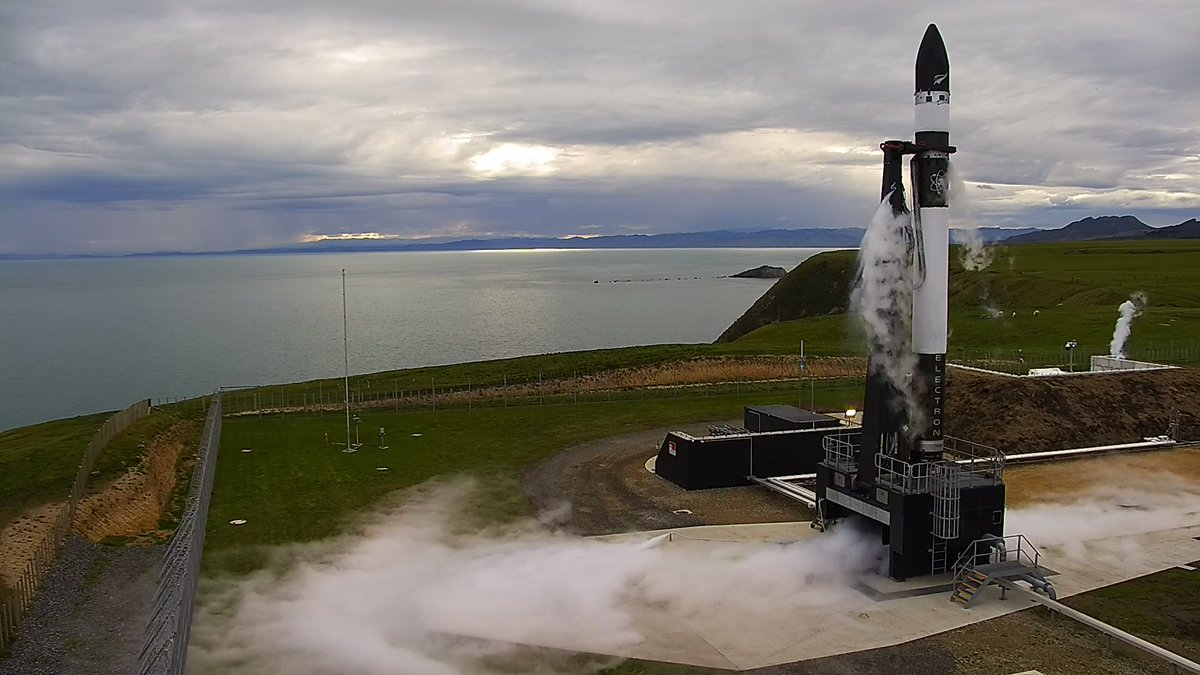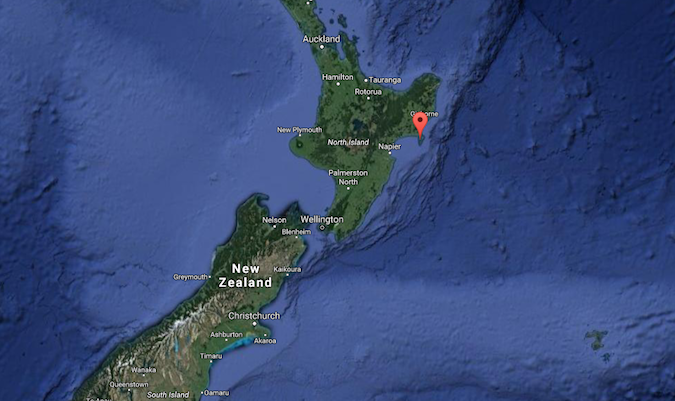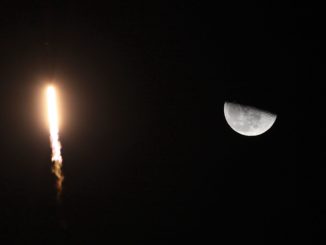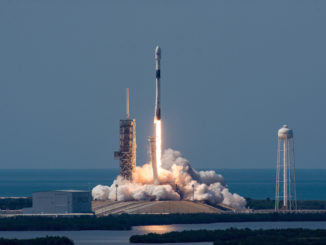Video credit: Rocket Lab
The debut launch of Rocket Lab’s Electron rocket from a privately-operated base in New Zealand made it to space Thursday, proving the performance of major parts of the booster before faltering short of the velocity it needed to enter orbit, the company said in a statement.
The U.S.-New Zealand company said data from the test flight will help refine the Electron launcher for future demonstrations before it enters commercial service hauling small satellites to orbit.
“It was a great flight,” said Peter Beck, Rocket Lab’s CEO. “We had a great first stage burn, stage separation, second stage ignition and fairing separation. We didn’t quite reach orbit,, and we’ll be investigating why, however, reaching space in our first test puts us in an incredibly strong position to accelerate the commercial phase of our program, deliver our customers to orbit and make space open for business.”
The 55-foot-tall (17-meter) Electron rocket, made of black carbon composite materials, fired its nine first stage Rutherford engines in the final seconds of Thursday’s countdown. After a quick health check, computers commanded hold-down restraints to release the booster at 0420 GMT (12:20 a.m. EDT) from Launch Complex 1, Rocket Lab’s operations base on Mahia Peninsula on the eastern coast of New Zealand’s North Island.
Liftoff occurred at 4:20 p.m. local time in New Zealand, and the Electron rocket quickly climbed into mostly cloudy skies, turning to the south over the Pacific Ocean.
Thursday’s launch, christened “It’s a Test,” came after bad weather halted flight preps on three consecutive days.
The nine Rutherford first stage engines, each burning a combination of kerosene and liquid oxygen, cumulatively produced around 34,500 pounds of thrust at liftoff and powered up to 41,500 pounds of thrust as the rocket soared into the stratosphere.
The first stage engines were scheduled to switch off at T+plus 2 minutes, 30 seconds, followed by first stage separation around four seconds later. A single modified Rutherford engine on the Electron’s second stage was programmed to ignite for nearly five minutes to drive the launcher into an orbit between 186 miles (300 kilometers) and 310 miles (500 kilometers) above Earth.
But something went awry with the rocket before passing the speed required to reach orbit.
Rocket Lab released no further details on the mission, which carried instrumentation collecting 25,000 channels of telemetry for engineers to evaluate the launcher’s performance. There were no commercial satellites aboard the rocket, only an inert payload, according to a launch license issued by the Federal Aviation Administration, the regulatory authority which oversees Rocket Lab operations because the company is based in the United States.
Nevertheless, Beck said in a statement the accomplishments in Thursday’s test flight will advance Rocket Lab’s mission to reduce the cost of space launches, particularly for lightweight payloads that have trouble booking rides on existing launchers.
“Rocket Lab will target getting to orbit on the second test and look to maximize the payload the rocket can carry,” the company said in a press release after Thursday’s flight.

“We have learned so much through this test launch and will learn even more in the weeks to come,” Beck said. “We’re committed to making space accessible and this is a phenomenal milestone in that journey.
“The applications doing this will open up are endless,” Beck said. “Known applications include improved weather reporting, Internet from space, natural disaster prediction, up-to-date maritime data as well as search and rescue services.”
NASA and several commercial companies have contracts for launches of CubeSats and other small spacecraft on Rocket Lab’s Electron booster, which is due to enter service following two more test flights later this year.
Rocket Lab is headquartered in Huntington Beach, California, with a design and engineering office in Auckland, New Zealand.
The company says it will charge $4.9 million per Electron flight, significantly less than any other launch provider flying today, and offer a dedicated ride for payloads that currently must ride piggyback with a larger payload.
With money from venture capital funds in Silicon Valley and New Zealand, along with a strategic investment from Lockheed Martin, Rocket Lab completed the design and qualification of the Electron rocket with less than $100 million since the company was established in 2006, according to Beck.
“We’ve done a lot in a short period of time with a little,” Beck said in a March interview with Spaceflight Now.
Rocket Lab’s progress was marked with test launches of more than 80 sounding rockets since the company’s formation.
The total money invested in Rocket Lab to date is $148 million, and the company was valued at more than $1 billion during a Series D financing round closed in March.
“It has been an incredible day and I’m immensely proud of our talented team,” Beck said in a statement Thursday. “We’re one of a few companies to ever develop a rocket from scratch, and we did it in under four years. We’ve worked tirelessly to get to this point. We’ve developed everything in-house, built the world’s first private orbital launch range, and we’ve done it with a small team.”
Rocket Lab did not provide a public live video webcast of Thursday’s launch, but a video feed of the liftoff was privately streamed to the company’s facilities elsewhere in New Zealand and the United States.
Future Electron missions could loft up to 330 pounds (150 kilograms) of payload to a circular sun-synchronous polar orbit 310 miles above Earth.
Each Rutherford engine on the 3.9-foot-diameter (1.2-meter-diameter) rocket generates around 4,600 pounds of thrust, using battery-powered pumps to cycle the engine’s liquid propellants, an innovation Rocket Lab describes as “entirely new” in rocket propulsion.
The Electron’s engine, named for the New Zealand-born nuclear physicist Ernest Rutherford, is the first of its type to be primarily 3D-printed. Each Rutherford engine, including its engine chamber, injector, pumps and main propellant valves, can be printed in 24 hours.
Readying the commercial launch range in New Zealand proved to be just as much a challenge as the rocket itself, Beck said before the test flight.

“We are not just commissioning the launch vehicle, but we’re commissioning an entire launch range, including all the flight termination assets and all the telemetry assets,” Beck said in a March interview with Spaceflight Now. “We’ve got downrange tracking stations that we own on remote islands in the Pacific, so it’s not just a matter of rolling the vehicle out to an established pad.
“It’s the very first time that the FAA has provided a truly commercial launch license, so there’s a lot of work in that,” Beck said.
Personnel from the Pacific Spaceport Complex in Alaska relocated to New Zealand to set up and test tracking and range safety systems at the Mahia Peninsula launch site.
Beck said in March that the maiden launch would fly with manual and autonomous flight termination systems, and future Electron missions will likely carry just a self-destruct device, which simplifies the infrastructure required for a rocket mission.
“The range is a massive undertaking,” Beck said. “You don’t realize how good you’ve got it until you go and build your own range and realize what’s involved in that. Anybody who turns up at KSC (Kennedy Space Center) has it great, that’s for sure.”
A crew of around 45 engineers and managers stationed at Rocket Lab mission control in Auckland and at a range control center at Mahia were in charge of the countdown.
Rocket Lab says it could theoretically launch once every 72 hours from the Mahia Peninsula base once commercial operations commence, but Beck said the company also has agreements to launch from NASA’s Kennedy Space Center in Florida and from the Pacific Spaceport Complex in Alaska.
Beck said launches going into orbits over Earth’s poles could take off from Alaska, while other missions could be based from Kennedy Space Center.
NASA is one of several customers who have signed up for a launch with Rocket Lab to place multiple small research satellites into orbit, committing to a nearly $7 million launch contract in October 2015.
The U.S. space agency also signed launch contracts with two other company’s working on micro-launchers in the same class as the Electron: Virgin Galactic and Firefly Space Systems.
The air-dropped LauncherOne rocket, now part of a Virgin division known as Virgin Orbit, could conduct its first test launch by the end of this year. Firefly ran into financial trouble last year and stopped development of its Alpha launch vehicle.
Rocket Lab also has a commercial launch deal with Moon Express, one of the competitors vying for the Google Lunar X Prize, for three missions to send micro-landers to the moon, the first of which must depart by the end of 2017 to win the prize.
Other Rocket Lab customers include Planet, a San Francisco company which builds and manages a fleet of CubeSats in orbit designed to take daily images of Earth’s surface. Planet’s launches to date have been on supply ships heading for the International Space Station, where the CubeSats are deployed, and as secondary payloads aboard Indian rockets.
Customers with satellites released from the space station or launched on the same booster with larger spacecraft often have little say about where or when their payloads go into space, a problem companies like Rocket Lab intend to solve.
Planet signed a launch agreement in 2016 with Rocket Lab for at least three dedicated Electron flights.
Spire Global also agreed to send its CubeSat-type satellites to orbit on up to 12 Electron rocket launches, expanding the San Francisco-based operator’s fleet of commercial weather forecasting and maritime tracking spacecraft.
Rocket Lab has also sold one Electron mission to Spaceflight, a Seattle company which aggregates small satellites from commercial, academic and government customers to share launches into orbit. Spaceflight and Rocket Lab did not announce a date for the rideshare flight in a press release last week disclosing the launch contract.
Rocket Lab’s latest infusion of $75 million from venture capital funds in March will help the company “scale up” its production to be ready for the anticipated launch rate, Beck said.
“The 3D-printed engine is a big part of that,” Beck said in a March interview. “Right now, with six printers, we can produce one engine every 24 hours, so if we need to produce more engines, we can just buy more printers. We put ourselves in a very scaleable situation, and now we just need to execute on that.”
At full production, Rocket Lab says it expects to launch more than 50 times per year.
The newest funding will also go toward outfitting a new rocket 150,000-square-foot rocket factory in Huntington Beach and upgrading Rocket Lab’s existing facilities in New Zealand.
Email the author.
Follow Stephen Clark on Twitter: @StephenClark1.



